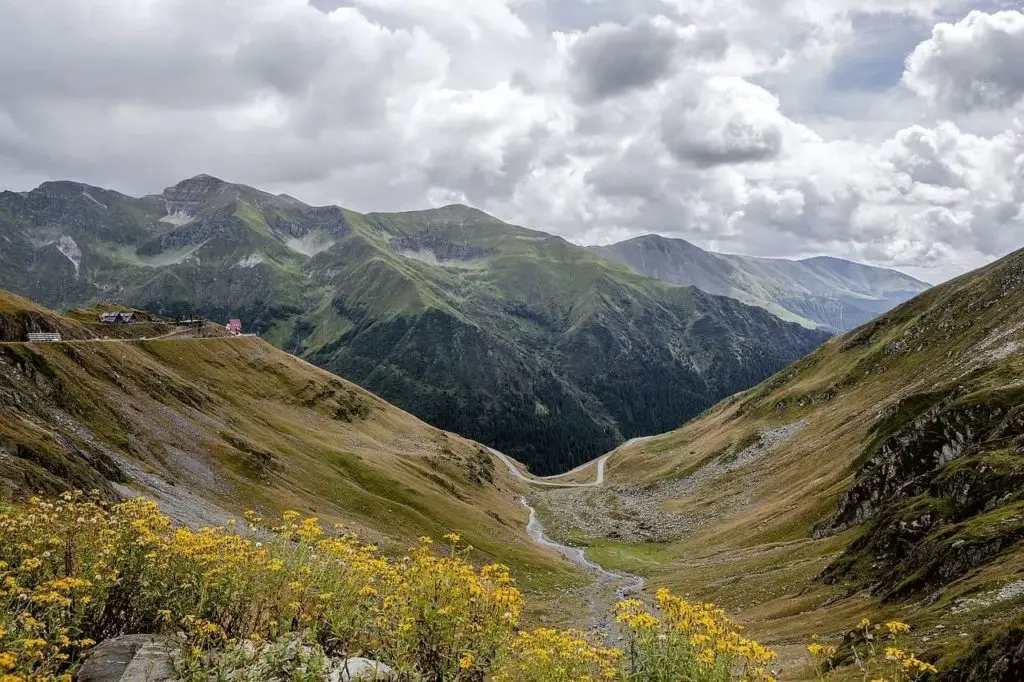This post may contain affiliate links. At no cost to you, purchases made through these links may result in a small commission for Traveling Transylvania. We never recommend products that we don’t know and trust. Thank you for your continued support!
I never expected to wind up in Romania for any extended period of time. However, I arrived mere days before the dreaded lockdown of March 2020, and have been here ever since (save for a few trips)! At the time of this writing it’s now been about two and a half years. Damn! That means I’ve had an awful lot of time to check out some of the amazing, cool things to do in Romania.
The country is not all Dracula and forests. From famous castles and fortified churches to the mountains and seaside, Romania truly offers something for everyone. Of course, most people have heard of Bran Castle or perhaps even the painted monasteries of Bucovina – but have you thought of visiting an underground lake? How about the most haunted forest in Europe?
I’ve rounded up the top 26 things to do in Romania that will make tourists fall in love with this country – have you visited them?
- Check out Romania's Stunning Castles
- Visit One of the Most Beautiful Villages – Rimetea
- Party by the Black Sea in Vama Veche
- Check Out the UNESCO-Listed Danube Delta
- Spend a Few Days Exploring Sibiu's Old Town
- Pay a Visit to the Wooden Churches of Maramureș
- Hike the Carpathian Mountains
- Sample Traditional Romanian Food and Wine
- Sip Tuica (Palinca)
- Painted Monasteries of Bucovina
- Explore the Sighișoara Citadel
- Pay Your Respects at the Merry Cemetery
- Drive the Transfăgărășan Highway
- Visit Balea Lake & Balea Waterfall
- Visit Europe's Most Haunted Forest in Cluj-Napoca
- Walk the Narrowest Street in Brașov
- Visit all Seven Fortified Churches of Transylvania
- Experience Life at a Brown Bear Sanctuary
- Go to a Summer Music Festival
- Visit Bucharest's Palace of Parliament
- Go Back in Time at the Dacian Fortresses of the Orăștie Mountains
- Check Out the Statue of King Decebalus
- Visit the Palace of Culture in Iași
- Ski or Snowboard at Poiana Brașov
- Visit Constanța Casino
- Go to an Underground Amusement Park at Turda Salt Mine
Check out Romania’s Stunning Castles
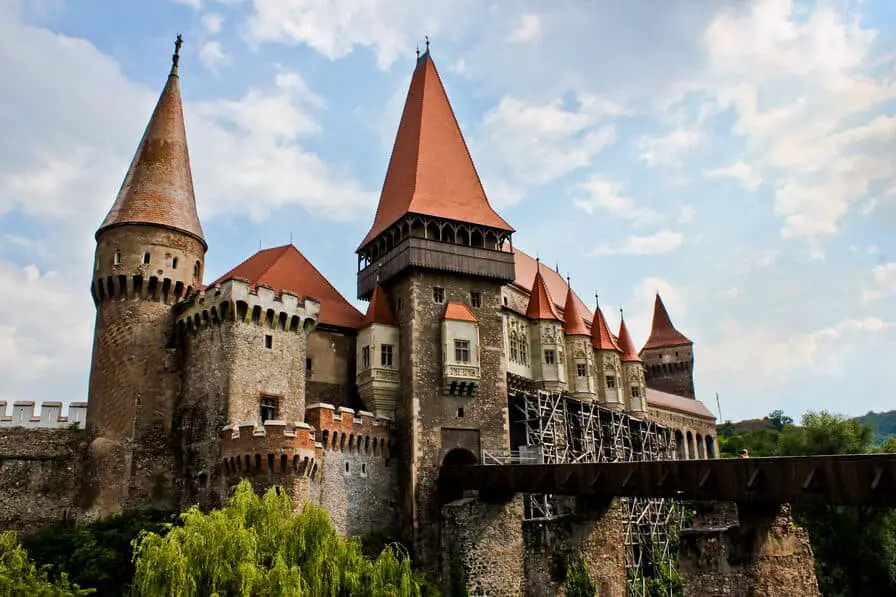
Nearly everyone in the world has heard of Bran Castle, though perhaps know it better as Dracula’s Castle. That’s right, Bran Castle is the castle that supposedly inspired Bram Stoker’s famous novel, Dracula.
The castle is in Bran, which is just outside of Brasov. It’s a rather kitschy, small town, filled with outdoor stands selling vampire souvenirs and memorabilia. The castle itself is quite impressive, however, and fully worth a visit. Though, there is a lot of controversy as to the castle’s actual role in the life of Vlad Tepes, Vlad Dracula, Vlad the Impaler – whatever you’d like to call him. Regardless, Bran Castle is a staple in Romania and a must-visit for any tourists in the country.
But in addition to Bran Castle, Romania offers some other stunning medieval castles as well. Corvin Castle (pictured above) is my personal favorite, though many others say that Peles Castle is the most beautiful in the country. Corvin Castle is one of the largest castles in Europe, whereas Peles Castle is simply stunning.
In addition to these three that are most popular with tourists, there are other, lesser known castles to visit in Romania as well. Cantacuzino Castle is a beautiful castle that is not nearly as popular. This allows you the freedom to explore without the crowds. Károlyi Castle and Teleki Castle are two personal favorites that are worth a visit as well.
Most of the castles in Transylvania and Romania are rather run-down, which is why they aren’t as popular as Bran Castle, Corvin Castle, or Peles Castle. However, there’s still a lot of history in those crumbling walls and floors, and they all have something unique to offer visitors. Checking out these beautiful castles is among the most interesting things to do in Romania.
If you happen to be visiting Romania during Halloween, be sure to check out the epic Halloween Party held annually at Bran Castle.
Visit One of the Most Beautiful Villages – Rimetea
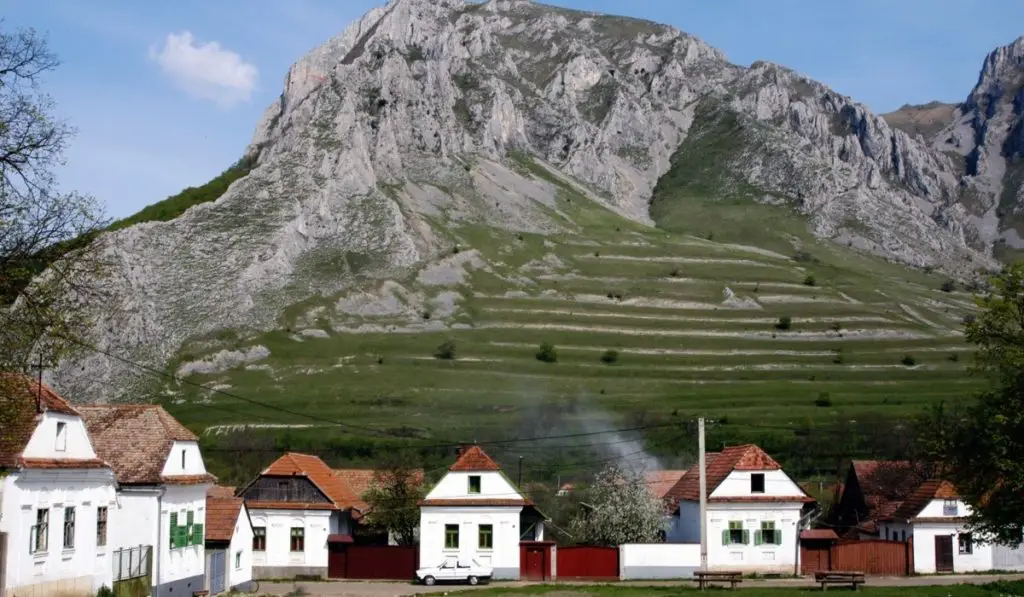
Village life is still very much alive and well in modern day Romania – though you won’t feel it’s particularly modern. Even outside of the villages, it’s common to see a horse and carriage trotting down the road and holding up traffic in the smaller towns and cities.
So it should come as no surprise that Romania is chock-full of beautiful villages. Of course, not all are aesthetically pleasing, and some are in varying states of degradation. But most people agree that the village of Rimetea in Alba county is one of the most beautiful in the country, if not the most beautiful.
Once part of the Kingdom of Hungary, Rimetea is a picture-perfect village where life slows down. Filled with uniform houses painted white with hunter green shutters and window trim, cascading red geraniums overflowing from the window boxes, it’s a beautiful place to visit during the spring or summer.
Rimetea is in the Trascau Mountains, which is part of the Apuseni Mountains in the Western Carpathians. The huge peak you see in most pictures featuring Rimetea is Piatra Secuiului. During your day in Rimetea, you can also hike Piatra Secuiului, which offers excellent hiking options for the adventurous.
Visiting Rimetea is easy as a day trip from Cluj Napoca or Alba Iulia.
Party by the Black Sea in Vama Veche
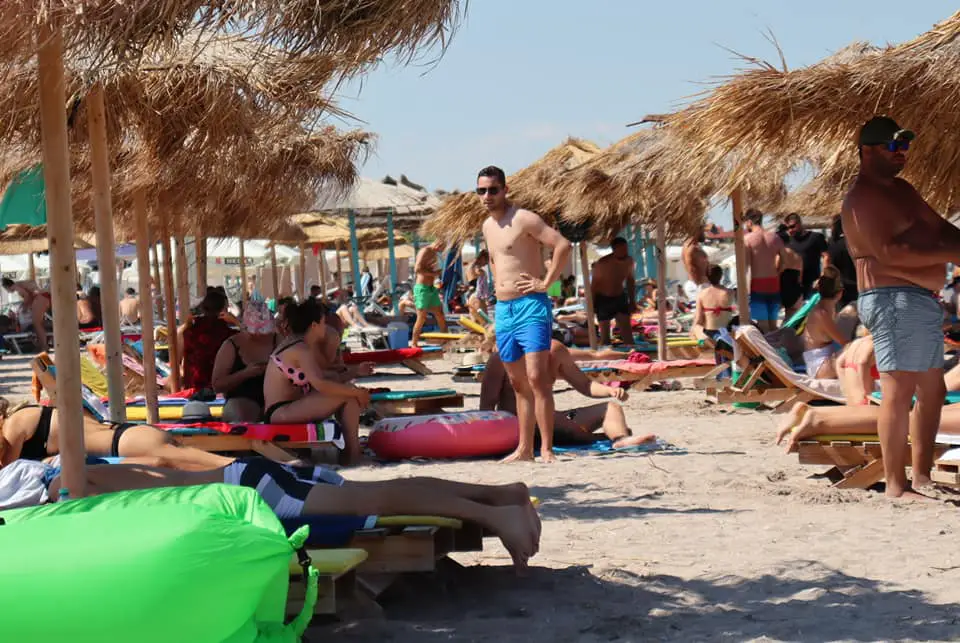
On the Southern shores of Romania’s Black Sea coast is the tiny, hipster-turned-party village of Vama Veche. Romanians (and tourists) of all ages love to party in Vama Veche during the summer months, often spending their nights dancing on the beach until the sun rises over the sea.
There isn’t a whole lot to do in the area aside from the sun and swimming during the day, dancing and drinking at night. But it’s definitely an experience to embrace!
Vama Veche, which literally translates to ‘old customs’, was once a small fishing village on the Bulgarian border. Romania’s academics used to vacation in Vama Veche during the Ceausescu era. It was here that people exchanged thoughts and ideas, embraced free thinking, and alternative lifestyles flourished.
Eventually, Elena, Ceausescu’s wife, learned of the village and ordered it to be destroyed. A few of the buildings were ruined but most survived.
Today, Vama Veche is party-central, though it hasn’t lost all of its charm. Sadly, prices are pretty exuberant in comparison with the rest of the country, and it’s a pretty loud destination not really suitable for families.
Still, it’s almost a rite of passage to spend at least a few days here!
Check Out the UNESCO-Listed Danube Delta
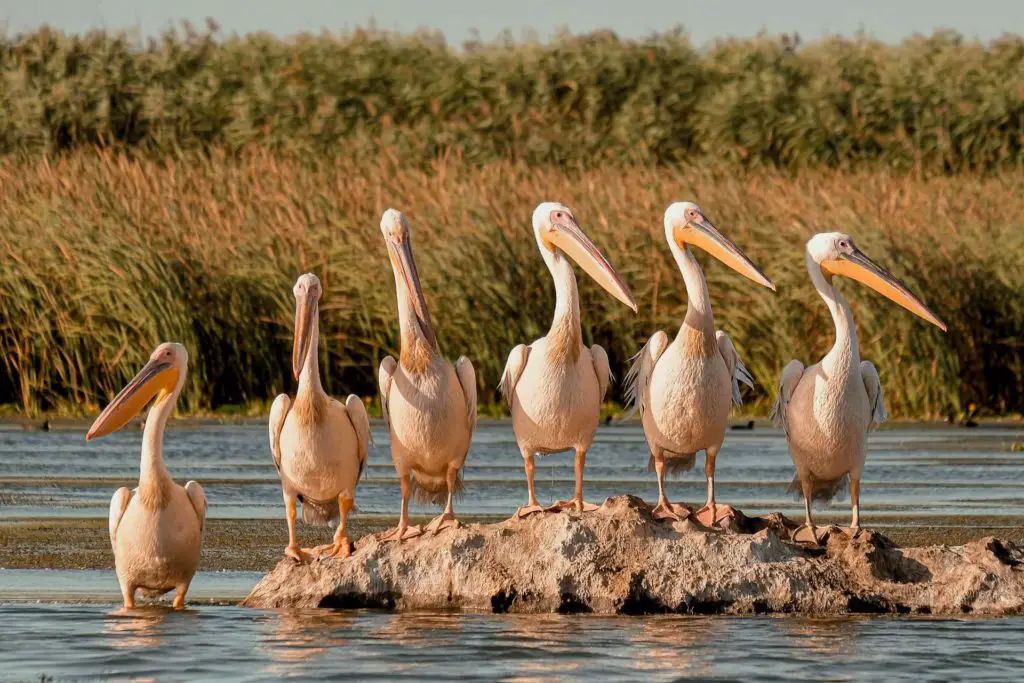
Visiting the Danube Delta is one of the items to top most tourists’ ‘Romania Bucket List’. This is one of the most unspoiled, wild destinations in the whole of Europe. There are plenty of opportunities to get out and explore in nature. It’s particularly popular with birders and fishermen alike (fishing requires a permit, however).
Most of the Danube Delta is in Tulcea County, which falls in the northern part of Romania’s Black Sea coast. A tiny portion goes further north into Ukraine.
The entire area spans over 5,700 square kilometers of canals, rivers, lakes, marshes, and small islands where the Danube spills into the Black Sea.
The Danube River originates in Germany, nearly 3,000 kilometers away, and is the second longest river in Europe. Another claim to fame is that it is the most international river in the world – the Danube river spans nine countries!
Part of what makes this area so special is the thriving biodiversity in the region. It boasts the title of ‘Third Greatest Biodiversity Count in the World’, falling behind only the Great Barrier Reef in Australia and the Galapagos Islands in Ecuador.
It’s much less popular, however, and even some Europeans are unaware of the magic that the Danube Delta holds.
There are three different branches that the river splits into as it approaches the Black Sea – Chilia, Sulina, and Sfantu Gheorghe. All are accessible from Tulcea, the most popular starting off point for tourists visiting the Danube Delta.
Aside from fishing and bird watching, taking boat rides down the canals and visiting the villages that seem to be afloat are among the most popular things to do. You can also visit an incredibly old forest, filled with wild horses and cattle.
Spend a Few Days Exploring Sibiu’s Old Town
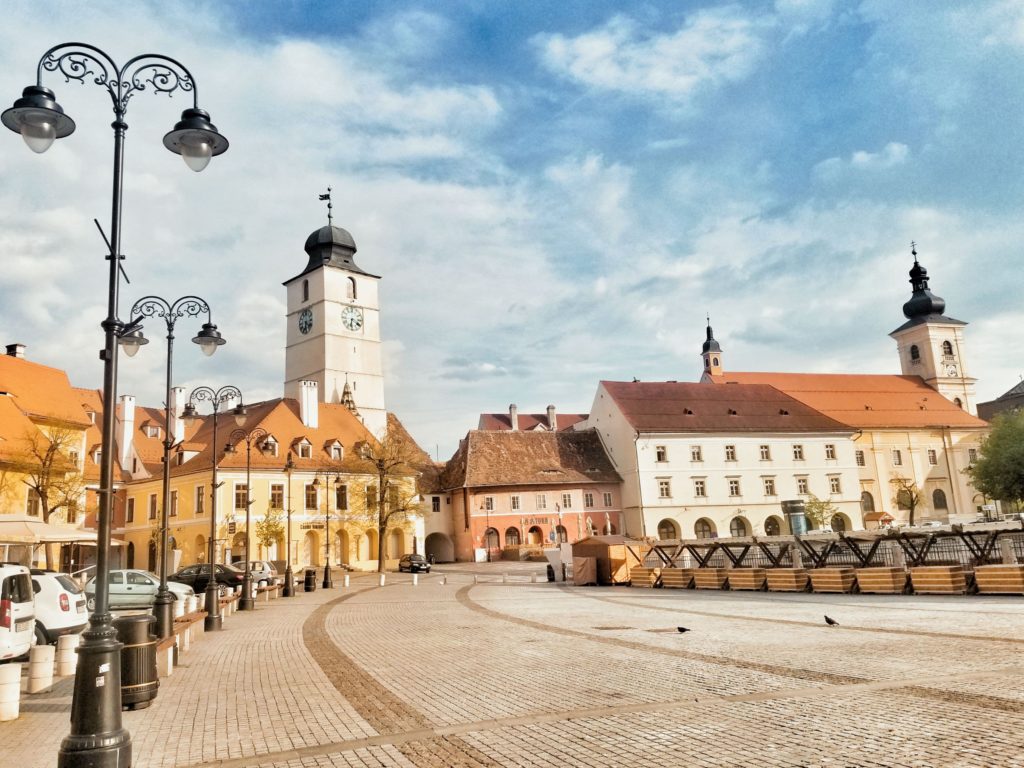
If you’re familiar with this website, I’m sure it’s clear to you that Sibiu is by far, my all-time favorite city in Romania. There are so many things to do in Romania that are easily accessible from the area, either within the city itself or as day trips from Sibiu.
Sibiu’s Old Town is so charmingly beautiful, it’s like something out of a fairy tale. Have fun exploring the winding network of tunnels and stairways, explore Piaţă Mica, Piaţă Mare, and Piaţă Huet. Do some shopping on Strada Nicolae Bălcescu, or simply wander around people-watching.
The most popular things to do in Sibiu include climbing the Council Tower, where panoramic views over the entire city reward you at the top. The Brukenthal National Museum is a stunning art museum that offers one impressive art collection after another, focusing on Romanian painters and Romanian culture. Astra’s open air museum is popular for families, and offers a gateway to the past, displaying the evolution of Romanian homes throughout the ages. Dare to tell a lie on the Bridge of Lies, another popular tourist attraction, and see if it ‘speaks’ to you.
The Old City has no shortage of amazing places to eat in Sibiu. It’s widely-known among Romanians that Sibiu is one of the most foodie-friendly cities in the entire country.
Personal favorites include Restaurant Grand Plaza, Kulinarium, Hermania, and Ribs and Beer. For drinks, head to Saint Andrew’s Scottish pub, where you’re sure to meet fellow travelers and friendly locals.
There are a ton of outdoor activities nearby as well. Popular day trips from Sibiu include Buila Vânturărița National Park, Râpa Roșie (the red ravine), Păltiniș, and Cozia Natural Park.
Pay a Visit to the Wooden Churches of Maramureș
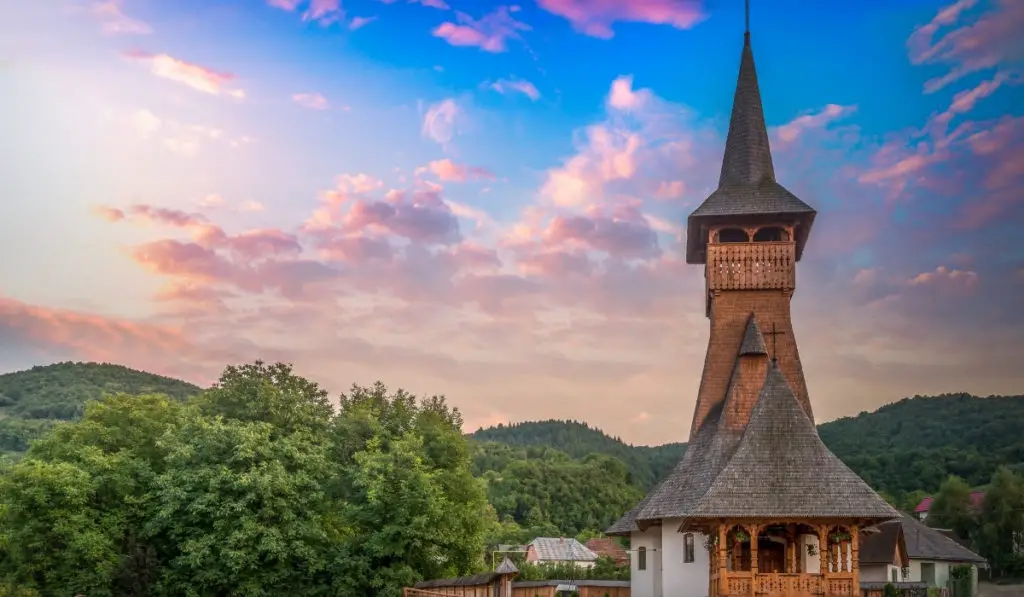
One of the most unique things about Romania is its wooden churches. These beautiful structures are in the region of Maramureș. They are some of the most well-preserved examples of medieval architecture in the world.
There are over 100 wooden churches in Maramures, and each one is different. Though most are Orthodox, there are a few Greek-Catholic churches as well. They range in size from small chapels to large cathedrals. Intricate carvings and paintings decorate both the interior and exterior.
The Maramureș churches are constructed of quality timber, which is different than many of the churches throughout the rest of Romania, which are usually constructed out of concrete or hard stone. The characteristic trait of the Wooden Churches is their tall, slender bell towers that are always on the western side of the church. They are characteristic throughout the mountainous Maramures region of northern Romania.
The Maramures Wooden Churches began to appear beginning in the 17th century, and continued to pop up well into the 19th century. The wooden churches served as a response to the Catholic Austro-Hungarian church’s ban on building stone Orthodox churches. Pretty clever!
Eight of the hundred or so churches are UNESCO World Heritage Sites as of 1999 and include the churches: Bârsana, Budești, Desești, Ieud, Plopiș, Poienile Izei, Rogoz, and Șurdești.
Stop in Breb
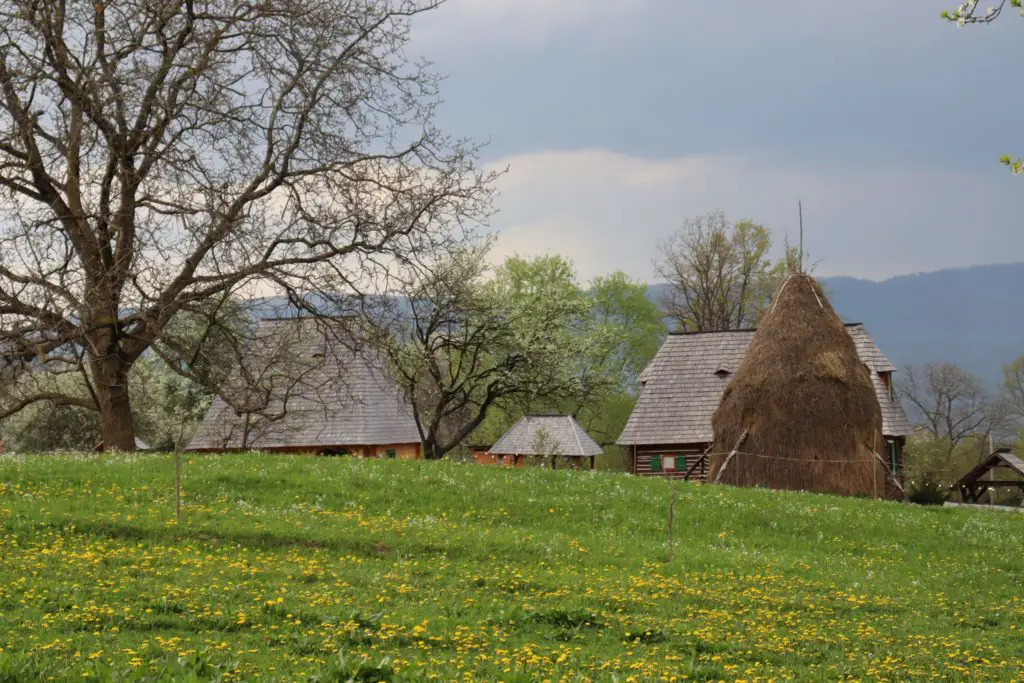
A visit to this region will allow you to experience the autonomous traditions that have prevailed since medieval days. If you get a chance, spend a few days in Breb, one of the most beautiful and enchanting villages in the area.
Well-known in British culture due to a popular book, Along the Enchanted Way, by William Blacker, Breb is a popular village to visit in the area. It’s one of the most beautiful places I’ve seen! It’s a perfect place to take the pups (and baby or kids) and let them bask in nature. Breb is particularly special if you’re coming from a big city, like we did.
It’s a short drive to the Merry Cemetery, another of the best things to do in Romania.
Hike the Carpathian Mountains
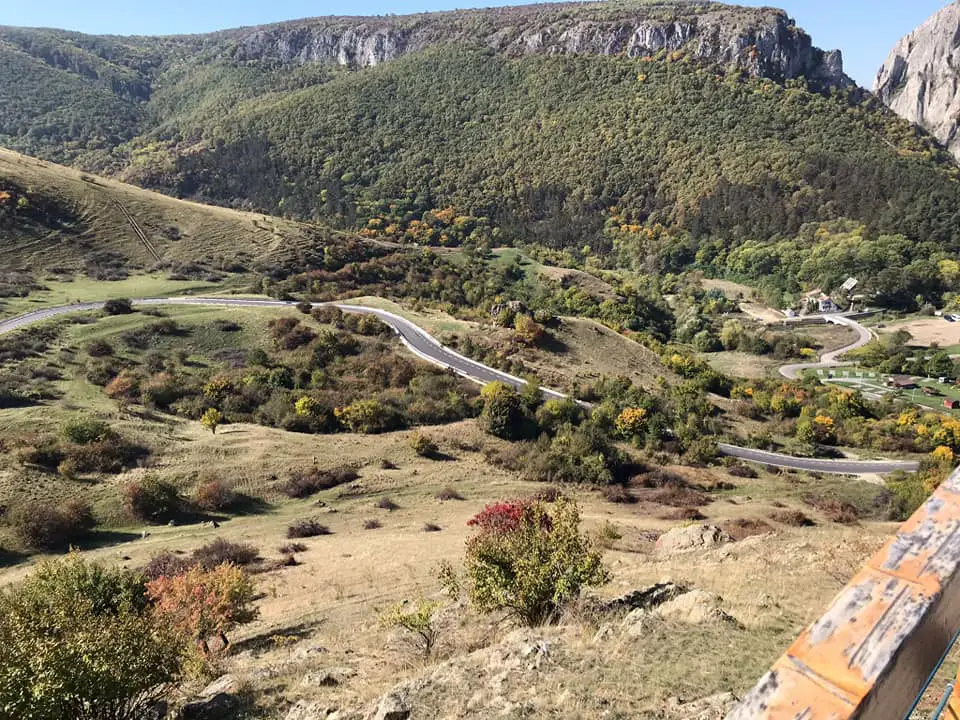
The Carpathian Mountains are a chain of mountains that stretch across Central and Eastern Europe. They form a natural border between the countries of Romania and Hungary, and also extend into the Czech Republic, Slovakia, Poland, Ukraine, and Moldova. The range includes some of the tallest mountains in the region, including Mount Gerlach (2,655 m) and Mount Tarnic (1,696 m). The Carpathians are home to a diverse array of wildlife, including brown bears, lynx, wolves, chamois, and red deer. The mountains are also popular with hikers and skiers as well as those looking for some natural history.
There are a number of different sub-ranges of the Carpathians in Romania, all of which are perfect for hiking enthusiasts. The Retezat, Fagaras, Apuseni, Bucegi, Cândrel, and Bistrita are just a few of the sub ranges that hikers love to explore.
I’ve detailed some of our favorite sub-ranges to hike below:
Retezat National Park is located in the Southern Carpathian Mountains and is home to some of the most beautiful scenery in Romania. The park is abundant with forests, meadows, and rivers. There are also a number of hiking trails, making it a great destination for nature lovers.
The Fagaras Mountains are located in central Romania and offer some of the best hiking in the country. There are numerous trails to choose from, ranging from easy to challenging. The mountains are also home to several glaciers, making them a popular destination for ice climbing.
The Apuseni Mountains are a great place to hike and explore. There are many different trails to choose from, so you can find one that is perfect for your level of fitness and experience. The scenery is stunning, and the views from the top of the mountains are truly breathtaking.
The Bucegi Mountains are also a favorite!
Sample Traditional Romanian Food and Wine
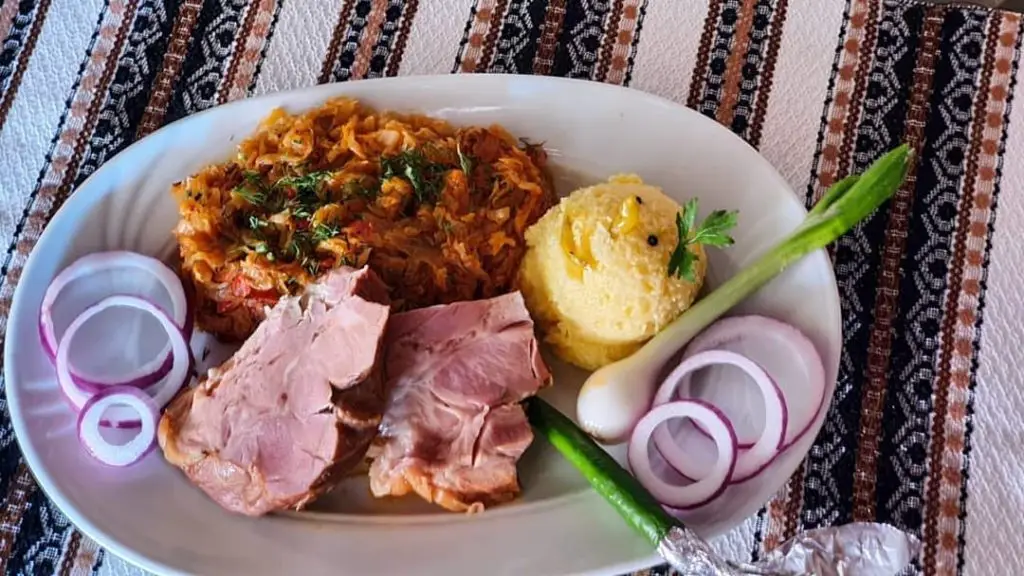
Traditional Romanian food and wine was something that truly surprised me when I arrived. I fully expected to live off of meat and potatoes for the duration of my stay here, however, that couldn’t be farther from the truth.
There is a lot of foreign influence in Romanian cuisine – Hungarian, Turkish, Austrian, German, and more. Particularly in Transylvania, the Hungarian and German influence is quite prominent in the food.
The most popular dish in Romania is sarmale, cabbage rolls. The cook stuffs the sarmale with a mixture of ground meat, rice, and herbs. A special pot specifically designed for sarmale cooks them.
Try them with a little Eros Pista if you like things spicy – this is likely the only, legitimately spicy hot sauce you’re likely to find in Romania (though it is a Hungarian product).
Ciorba de Burta (belly soup), ciolan (ham hock) with beans, zacusca (eggplant spread), pickles, baked peppers, and cabbage salad are all likely to grace your table when dining at a Romanian restaurant.
Vegan or vegetarian? No problem. There is a surprisingly wide array of veg-friendly options as well. Vegetarian sarmale, mushroom goulash, and mamaliga cu brânza (polenta with cheese) are all accommodating. If you’re in question, say you want something ‘de post’ – this means without animal products. You’re likely to see a lot of menus ‘de post’ leading up to Orthodox Easter.
In terms of desserts, you’ll be in heaven. Papanasi are the ultimate – they are little, fried balls of dough with sweet cheese, topped with a sour plum or cherry dulceata (jam) and a dab of sour cream. Other popular Romanian desserts include Cozonac (common around Christmas time), prajitura or placinta (cake or pie), and anything involving plums, cherries, and sweet cheese.
Sip Tuica (Palinca)
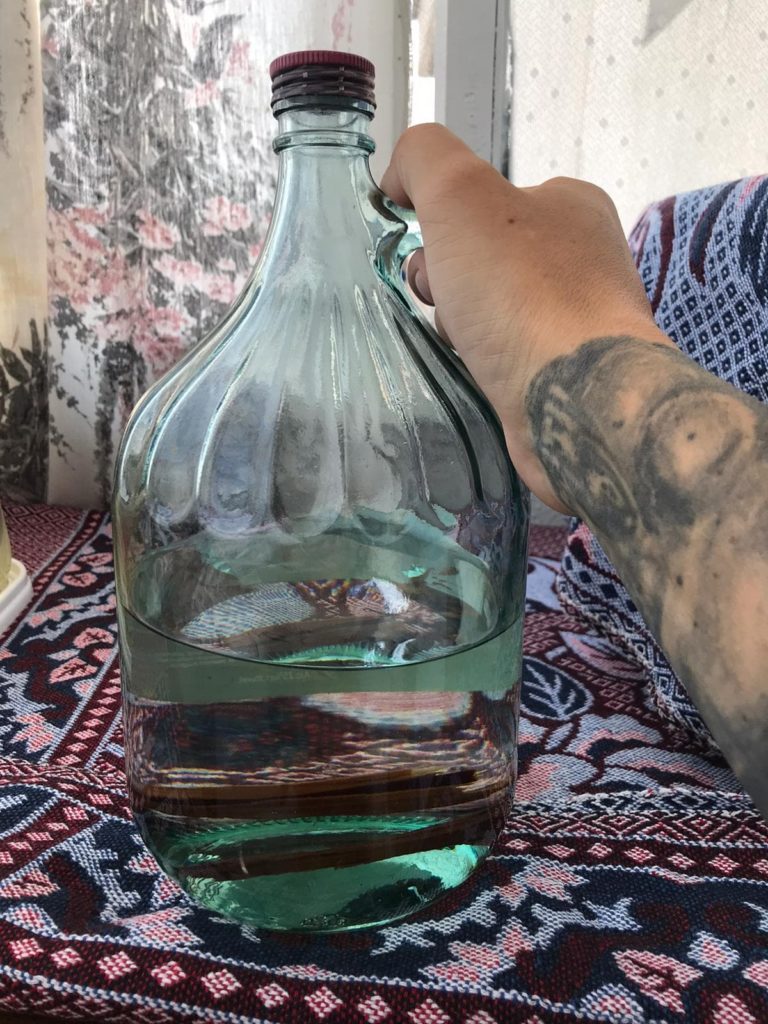
If you make friends while in Romania, they will undoubtedly invite you for a glass of tuica (or palinca – they are essentially the same thing, it just depends on the region from which you get it).
Tuica is a very strong spirit consisting of fermented plums, apples, peaches, apricots, or other stone fruits. The best comes from the Maramures region (in particular, a tiny village called Sârb).
To make tuica, the fruit of the plums is first fermented and then distilled. The fermentation process takes a few weeks, during which time the fruit breaks down and produces alcohol. After fermentation, distillation occurs to produce a clear liquid with a high alcohol content.
Tuica is typically served in small glasses, and it is considered to be a strong drink. You sip it instead of shoot it.
It is often drunk as an aperitif before a meal, or after dinner as a digestif.
If you are looking for a traditional Romanian drink to enjoy, tuica is a great option. It is a strong drink that is perfect for sipping, and it has a unique flavor that you are sure to enjoy. Whether you drink it before or after a meal, tuica is a delicious way to experience Romanian culture.
Just be careful – tuica has the same effect on me (and my husband) as tequila does on some people. In other words, it makes you a little bat-shit crazy and fired up, sometimes not in a good way!
Painted Monasteries of Bucovina
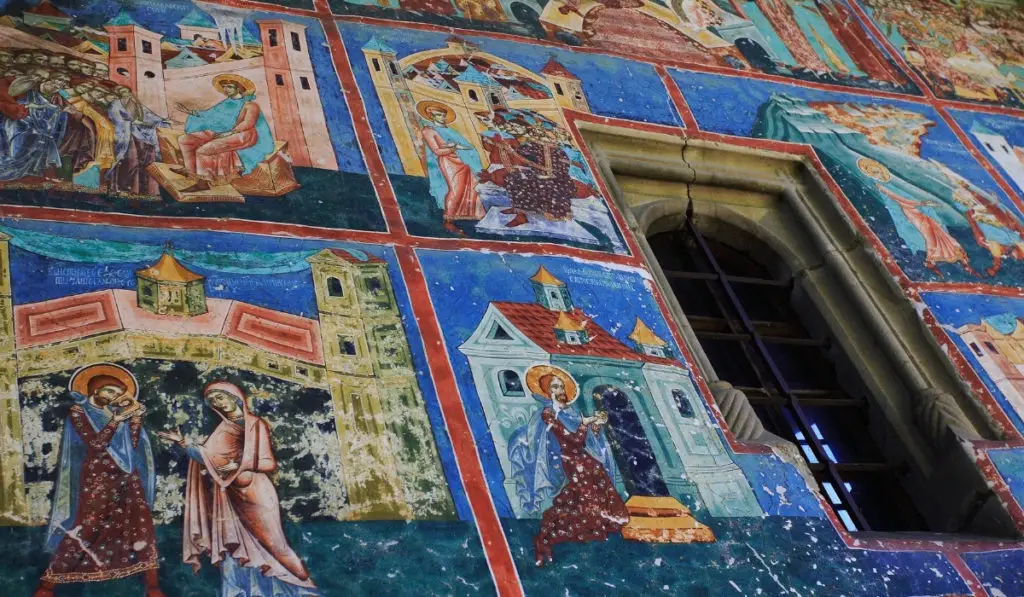
The Painted Monasteries of Bucovina are a collection of six monasteries located in the northeastern part of Romania. These monasteries were built in the 15th and 16th centuries. Religious scenes adorn the exterior walls. The monasteries are a UNESCO World Heritage Site and are one of the most popular tourist attractions in Romania for those looking for a taste of Romanian history.
The six monasteries include:
Suceava (Sucevita) Monastery
The best-known of these monasteries is the Suceava Monastery, founded in the early 15th century. The exterior walls are covered with paintings of saints and angels, while the interior is decorated with biblical scenes.
This monastery is notable for its beautiful green frescoes. Sucevita is less crowded than Voroneț, so it’s a great choice if you’re looking for a more relaxed experience.
Moldovița Monastery
The Moldovița Monastery is one of the best-preserved of the bunch and its exterior walls are covered in beautiful frescoes. The monastery was founded in 1532 by Petru Rares, who was the voivode (ruler) of Moldavia at the time.
This monastery is famous for its brightly-colored frescoes, which depict scenes from the Old and New Testaments. Moldovita is smaller than Voronet and Sucevita, but it’s just as beautiful.
Voroneț Monastery
Voroneț Monastery is one of the most beautiful painted monasteries in Romania. It is located in the village of Voroneț, Suceava County. The monastery was built in 1488 by Stephen the Great, one of the most famous rulers of medieval Moldavia.
The exterior walls of the monastery are covered with frescoes. The most famous fresco is “The Last Judgment”. This fresco covers the south wall of the church. It is one of the best examples of Byzantine art in Romania.
This monastery is famous for its striking blue frescoes, which earned it the nickname “The Sistine Chapel of the East.”
Humor Monastery
Humor Monastery was also built in 1532 by Petru Rares. Its dominant color is a reddish-brown that dominates the frescoes, which depict the Last Judgment and the Siege of Constantinople.
Both Petru Rares and his wife are both buried beneath the grounds of the Humor Monastery.
Arbore Monastery
This was the first of the Painted Monasteries to be included in the collection of UNESCO World Heritage Sites. Interesting frescoes at Arbore Monastery include The Hymn of the Prayers to the Virgin and The Prodigal Son. You’ll also see the Last Judgment and the Siege of Constantinople, which are common frescoes on the painted monasteries.
The monastery was founded in the 14th century by Saint John the Baptist, and it has been a place of worship ever since. Every year, thousands of pilgrims come to Arbore Monastery to pray and meditate.
Dragomirna Monastery
The Dragomirna Monastery, located in the Suceava county of Romania, is a Wallachian Orthodox monastery founded in the early 14th century.
The Dragomirna Monastery is known for its beautiful Byzantine-style frescoes and icons, as well as its collection of holy relics. The monastery’s most precious relic is a fragment of the True Cross, brought to the monastery by Saint Andrew himself. The Dragomirna Monastery is an important pilgrimage site for Orthodox Christians, and many pilgrims come to the monastery each year to venerate the holy relics and icons.
The best time to visit the painted monasteries is during the summer, when the weather is warm and sunny. However, keep in mind that these monasteries are located in a remote region of Romania, so you’ll need to plan your trip carefully.
If you’re traveling from Bucharest, the capital of Romania, it’s best to take a train or bus to Suceava, the nearest city to the painted monasteries. From Suceava, you can either take a taxi or rent a car to get to the monasteries.
Explore the Sighișoara Citadel
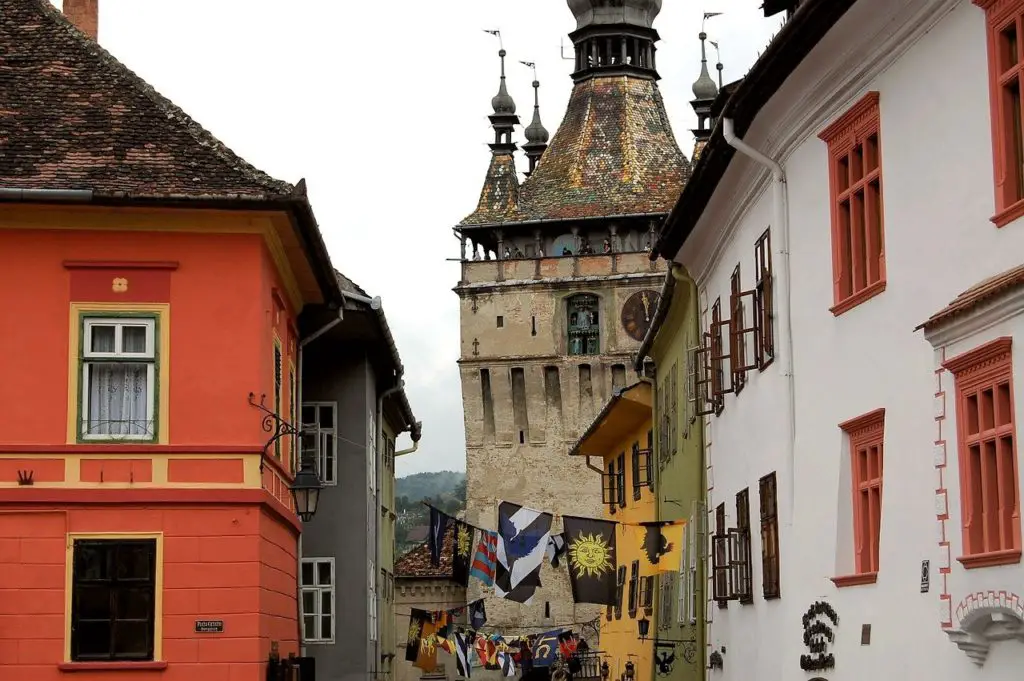
Sighișoara Citadel is one of the most beautiful and well-preserved medieval towns in Europe. The citadel, which is located in the historic center of Sighișoara, was built in the 12th century by Transylvanian Saxons and has been designated a UNESCO World Heritage Site.
The citadel is located on a hilltop overlooking the Tarnava River, offering some impressive views of the city outside the walled center. It served as a military stronghold for centuries and was home to many famous historical figures, including Vlad III Dracula.
The medieval citadel is famous for its Clock Tower, which is the tallest of its kind in Romania. The tower has a museum that chronicles the history of the town.
Other notable landmarks within the citadel include the Church of St. Nicholas, which dates back to the 13th century, and the House of Vlad Dracula, which was purportedly the home of Vlad III Dracula, the inspiration for Bram Stoker’s fictional vampire.
Today, the citadel is a popular tourist destination and is home to a number of shops, restaurants, and hotels. It is also the site of the annual Sighișoara Medieval Festival, which celebrates the town’s rich history and culture.
Pay Your Respects at the Merry Cemetery
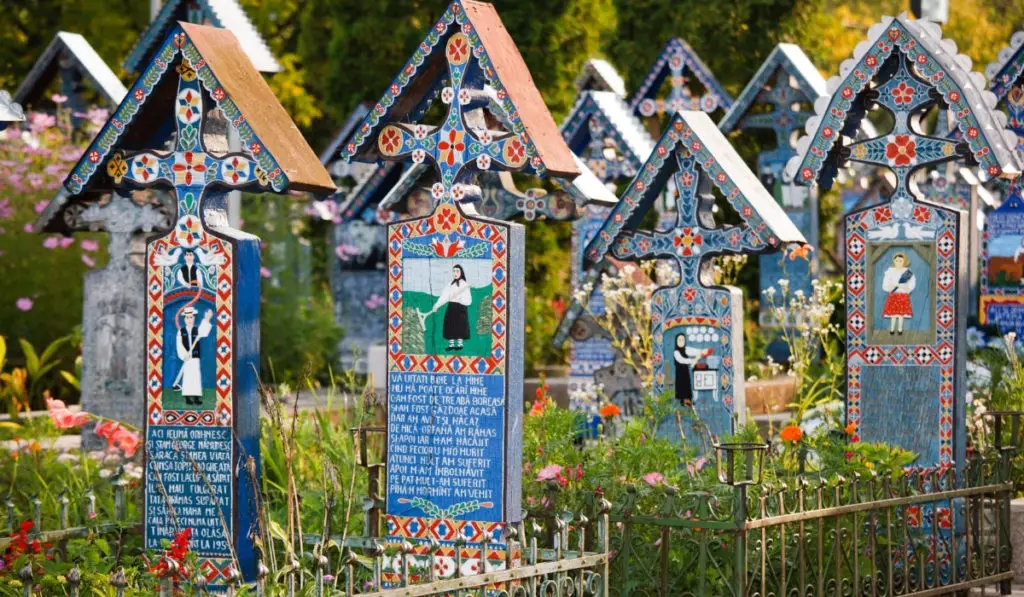
One of the most unique cemeteries in the world is in Sapanta, Romania. The Merry Cemetery is famous for its colorful tombstones that feature humorous epitaphs.
The cemetery began in 1935 by a local wood carver named Stan Ioan Pătraş. He believed that death should not be a sad occasion, but instead a celebration of life. He wanted to create a place where people could laugh and remember their loved ones. This is reflected in his tombstone creations, which feature brightly painted scenes and pictures or symbols from the deceased person’s life.
Some of the inscriptions are downright humorous, with references to alcoholism or other follies, but never in a malicious way.
Pătraş died in 1977, but his work has been continued by other artists. Today, the Merry Cemetery is a popular tourist destination. Visitors come from all over the world to see the unique tombstones and epitaphs.
The many visitors to the Merry Cemetery find it to be a truly unique and moving experience.
The Sapanta Merry Cemetery is a beautiful reflection of the Romanian people’s belief that death is not an end, but simply a part of life.
Drive the Transfăgărășan Highway
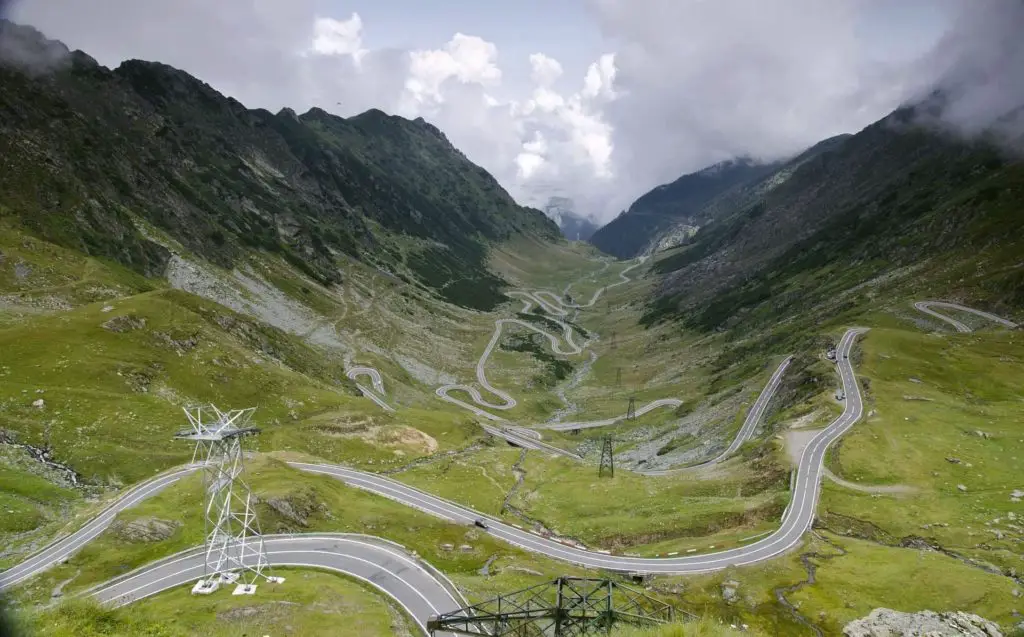
The Transfăgărășan Highway is one of the most scenic roads in Romania and one of the best things to do in Transylvania. It winds its way through the Fagaras Mountains, offering stunning views of the mountains and lakes. The highway is especially popular in the summer, when it is open for cars and motorcycles.
The Transfăgărășan Highway is located in the southern part of Romania. The road was built in the 1970s and it spans a distance of approximately 140 kilometers. The highway is typically open from May through October. It may be closed due to weather conditions, even within the standard opening months.
When driving on the Transfăgărășan Highway, you’ll need to take caution as there are many sharp turns and switchbacks. The road is also quite narrow in places, so be sure to drive carefully. However, the views from the highway are truly incredible and well worth the effort.
Driving in Romania is not for the faint of heart. It’s one of the most dangerous countries in which to drive within Europe, statistically speaking.
Exercise caution and drive carefully – no matter how careful you are, you can never count on others to be as cautious.
Visit Balea Lake & Balea Waterfall
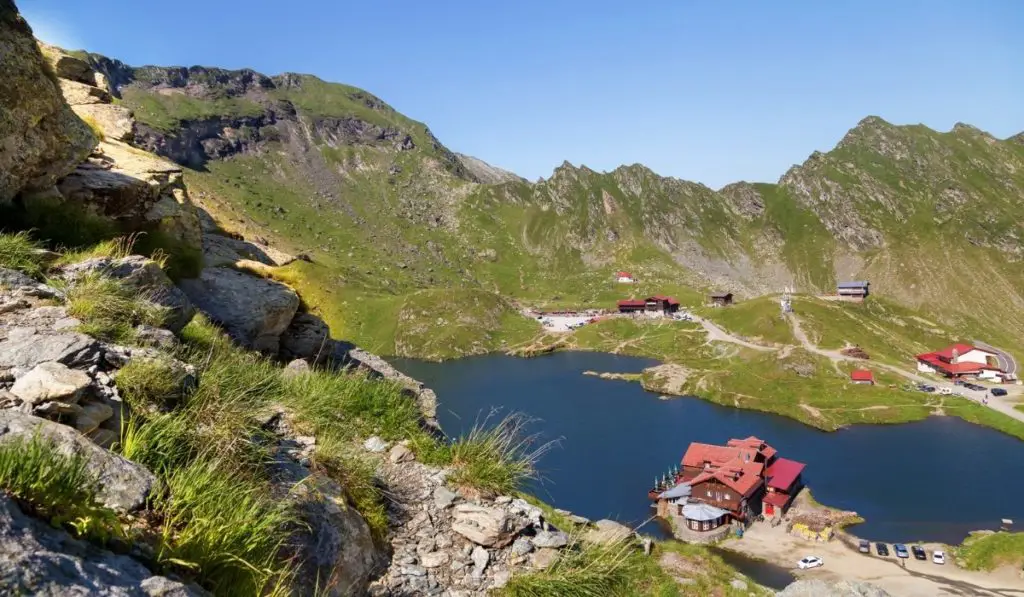
If you’re looking for a breathtaking natural destination in Romania, look no further than Balea Lake. Situated in the Fagaras Mountains, Balea Lake is one of the most popular tourist attractions in the country.
Whether you’re hiking to the lake or taking the cable car from Balea Cascada, the journey is sure to be memorable. Once you arrive at the lake, stunning views of the snow-capped mountains are there to greet you. If you’re lucky, you might even catch a glimpse of some wildlife.
The lake and waterfall are not always accessible due to weather conditions. Before you begin what may very well be a long drive to see them, check the local forecast and see if you can access the lake and waterfall.
Visit Europe’s Most Haunted Forest in Cluj-Napoca
If you’re looking for a truly unique and spooky destination, then look no further than Hoia Baciu forest in Romania. The forest got its name from a shepherd who disappeared in the early 1900s, and it is said to be cursed. Locals avoid the forest, as it is said that if you enter, you will never come out again.
This forest is famous as the ‘Bermuda Triangle of the Balkans’ because of the strange occurrences that have been reported here. People have claimed to see UFOs, paranormal activity, and even time warps!
Visitors have reported feeling strange sensations like nausea, anxiety, and fear while in the forest, and many have even claimed to see ghosts! If you’re feeling brave enough to venture into the Hoia Baciu Forest, be sure to bring a camera – you never know what you might capture on film!
I went to the forest once with Szilard and our dogs. However, we never made it past the first line of trees, as there were some ferocious-looking dogs that were unchained and unleashed coming straight towards our little boys. It’s still on my list to return one day, if only to photograph the unique, swayed-looking trees!
Despite the warnings, the Forest is a popular destination for tourists, and many people say that they have had strange experiences while visiting.
Whether you believe these stories or not, there’s no denying that Hoia Baciu Forest is a fascinating place to visit. If you’re looking for a truly unique experience, a visit to the Hoia Baciu forest is a must and a great thing to do in Cluj-Napoca.
Walk the Narrowest Street in Brașov
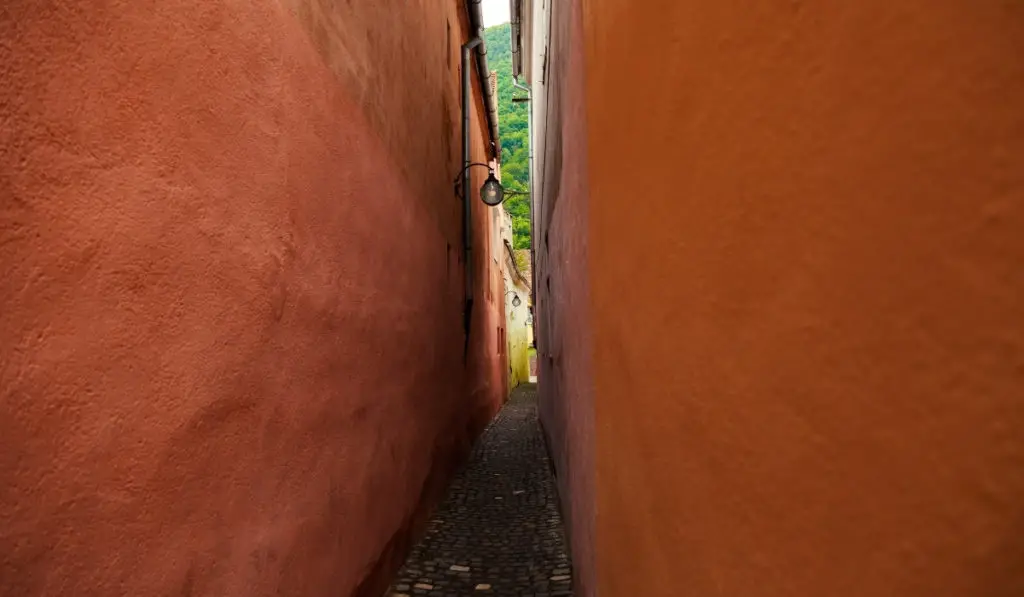
The narrowest street in Brașov is Strada Sforii, and it measures a mere 90cm at its narrowest point. The street was built back in the 15th century, and it used to be the only way to connect two of Brașov’s main streets.
Locals still use it as a shortcut today!
Today, it’s a popular tourist attraction, and it’s definitely worth a visit if you’re ever in town!
While you’re in Brasov, you should also check out the Black Church as well as Brasov Old Town. Check out our Brasov Guide for more things to see and do!
Visit all Seven Fortified Churches of Transylvania
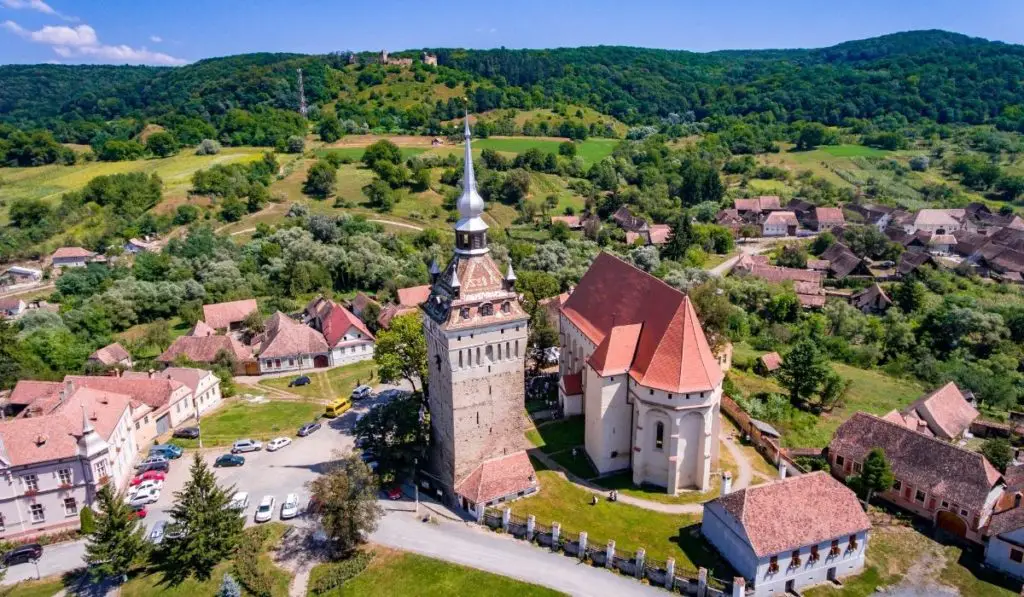
If you’re looking for a truly unique travel destination, the Fortified Churches of Transylvania should definitely be on your list. This is certainly among the best things to do in Romania. Villagers built these churches in the Middle Ages and are some of the most well-preserved examples of that architectural style in Europe.
There are over 150 fortified churches scattered throughout Transylvania, so you’ll have plenty to choose from when planning your visit. Many of them are located in small villages, which makes for a great opportunity to explore rural Romania and get a taste of traditional village life.
Only seven of these churches made the cut to be included in the prestigious list of UNESCO World Heritage Sites. These include:
Our personal favorites are Saschiz, Biertan, and Valea Viilor.
When visiting a fortified church, be sure to take some time to admire the intricate exterior stonework as well as the defensive features like towers and battlements. If you’re lucky, you may even be able to go inside and explore the church’s interior.
Whether you’re a history buff or just looking for a unique travel destination, the Fortified Churches of Transylvania are definitely worth a visit. So start planning your trip today!
Experience Life at a Brown Bear Sanctuary
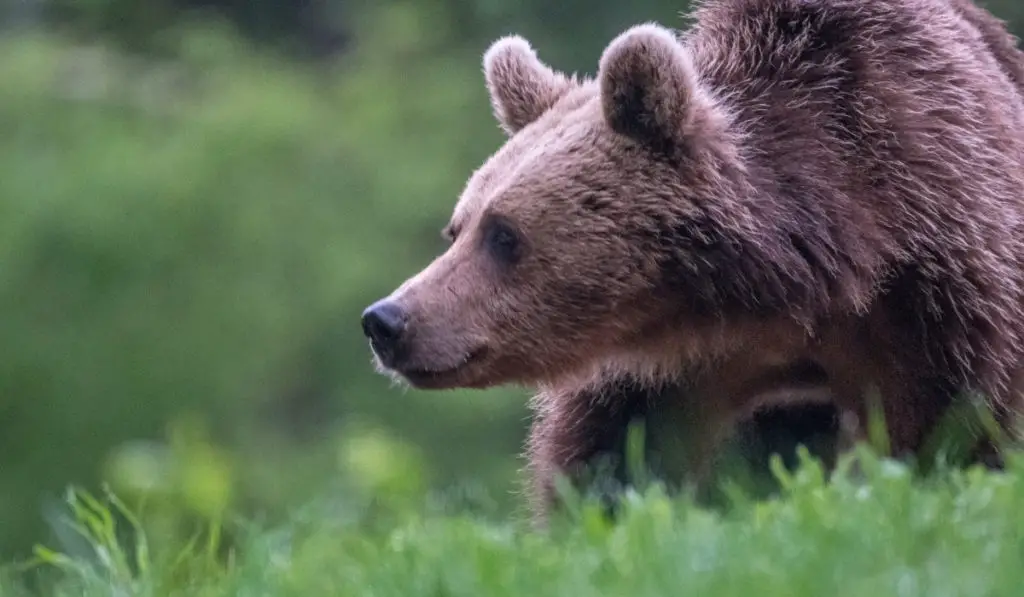
There are many animal sanctuaries around the world, but few are as unique as the Libearty Brown Bear Sanctuary in Romania. Dozens of rescued brown bears call this sanctuary home.
Since the sanctuary’s founding, it has become a haven for bears who have been abused, neglected, or abandoned. The sanctuary provides these bears with food, shelter, and veterinary care. Most importantly, it gives them the love and attention they so desperately need.
Visitors to the sanctuary can see the bears up close and learn about their individual stories. The experience is both heartwarming and eye-opening, and it’s sure to leave a lasting impression on everyone who visits.
We never promote animal interactions that are unethical, such as riding animals, zoos, or forced animal encounters. You can visit the Brown Bear Sanctuary in Romania with the peace of mind knowing that this is an ethical experience.
Go to a Summer Music Festival
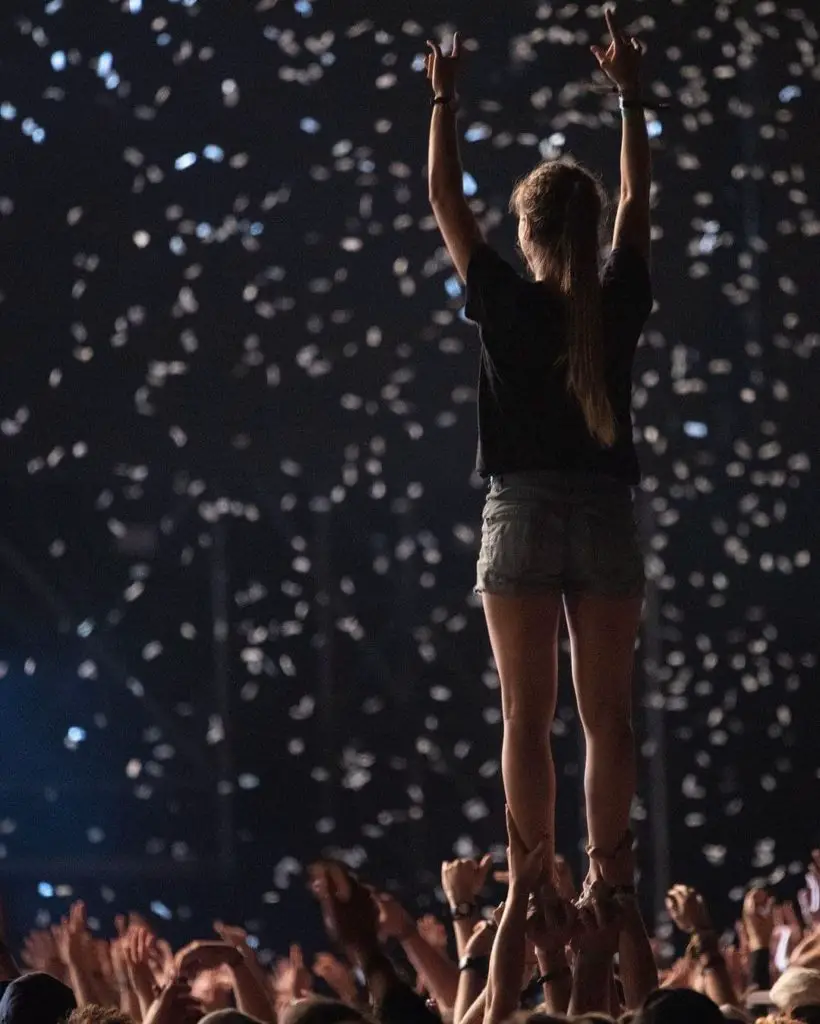
The northwestern Romanian city of Cluj-Napoca comes alive with festivals during the summer months. First comes TIFF (Transylvanian International Film Festival), followed by Lavanda Lola Festival (annual lavender festival), and finally, Electric Castle and Untold, two of the biggest music festivals in all of Europe.
Electric Castle is usually in July and has a five-day lineup of popular artists. Past headliners have included Florence and the Machine, Skrillex, Limp Bizkit, Sigu Ros, Franz Ferdinand, Alt-J, and more.
This year, the headliners include Twenty One Pilots, Disclosure, Aurora, Moderat, Sofi Tukker, and more. Sadly, Deftones were on the set list to perform but they canceled the day after we bought tickets!
Electric Castle is at Bánffy Castle in Bonțida, just outside of Cluj-Napoca.
Untold is more of an EDM festival that takes place in the city center at Cluj Arena each year in August. It’s a few days of non-stop dance music. Usual performances at Untold include Steve Aoki, Armin van Buren, Avicii, David Guetta, Major Lazer, and more.
There are other festivals throughout Romania, including on the Black Sea coast and in Bucharest, including SAGA Festival, Neversea, and Summer Well Festival.
Visit Bucharest’s Palace of Parliament
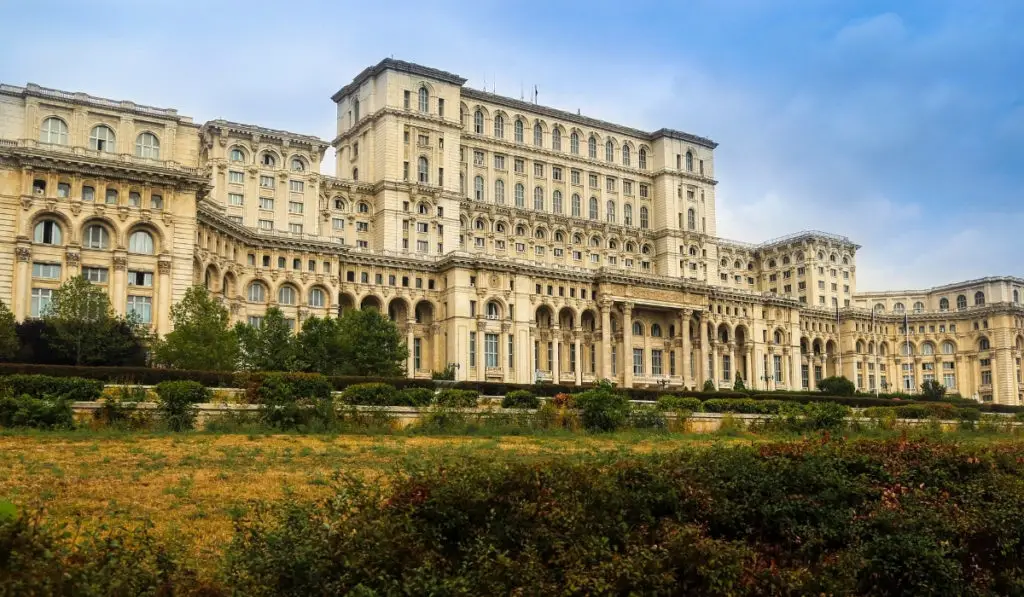
The Bucharest Palace of Parliament is a must-see when visiting the Romanian capital. Built in the 1980s under the communist regime of Nicolae Ceaușescu, it is the world’s second largest administrative building, after the Pentagon.
Paul Smărăndescu, a Romanian architect, designed the epic building. Upon its completion in 1997, it cost a total of $3 billion. It was originally intended to be the home of the Romanian Parliament, but it has never been used for that purpose. Instead, it now houses the Romanian Senate and Chamber of Deputies, as well as a number of museums and art galleries.
Visitors can take a guided tour of the building to learn about its history and see some of its key features, including the grandiose halls and chambers, as well as a number of Ceaușescu’s personal belongings. The palace is also home to a Museum of Contemporary Art, which showcases Romanian and international artists.
The Bucharest Palace of Parliament is a controversial symbol of the Communist regime in Romania. Many Romanians view it as a wasteful and unnecessary extravagance, built at the expense of the Romanian people. Others see it as a symbol of Romanian progress and modernization. Whatever your opinion of the palace, there’s no denying that it’s an impressive sight.
Go Back in Time at the Dacian Fortresses of the Orăștie Mountains
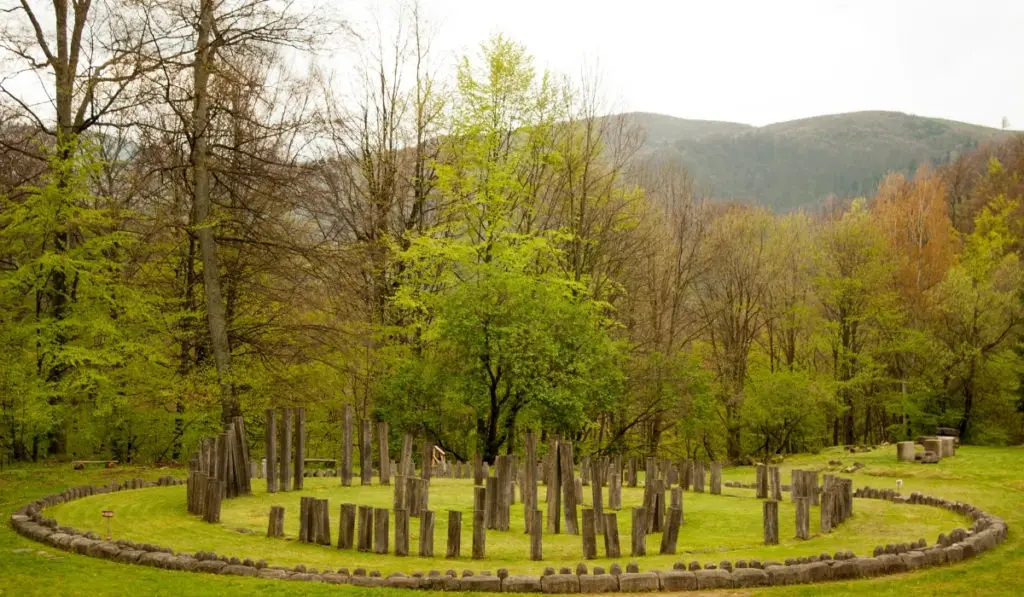
The Dacian Fortresses of the Orăștie Mountains are a group of six fortresses located in what is now Romania. The Dacians built the eerie fortresses, an ancient people who lived in the area between the 1st and 2nd centuries AD.
The Orăștie Mountains are located in central Romania, about 150 kilometers (93 miles) northwest of Bucharest. They are part of the Carpathian Mountains, which stretch across much of central and eastern Europe. The Dacian Fortresses of the Orăștie Mountains are located on three peaks in the Orăștie Mountains: Blidaru, Costești-Blidaru, and Piatra Roșie.
The Dacians built the fortresses between the 1st and 2nd centuries AD. The Dacians were an ancient people who lived in what is now Romania, Moldova, and parts of Ukraine and Bulgaria. They were skilled warriors who used the fortresses to defend against invasions from the Romans, who conquered the area in 106 AD.
The fortresses fell into ruin after the Roman conquest. Archaeologists and historians rediscovered the fortresses in the 19th century. Today, they are a popular tourist destination. Visitors can explore the ruins of the fortresses and learn about the history of the Dacians.
The Dacian Fortresses of the Orăștie Mountains are a UNESCO World Heritage Site as of 1999.
Some say the Dacian Fortresses are a ‘Romanian stonehenge’ and based on the photographs and overall vibe once you are there, it’s absolutely correct (though, I’ve never visited Stonehenge, so I can only imagine!).
This is one of the best things to do in Romania for history buffs.
Check Out the Statue of King Decebalus
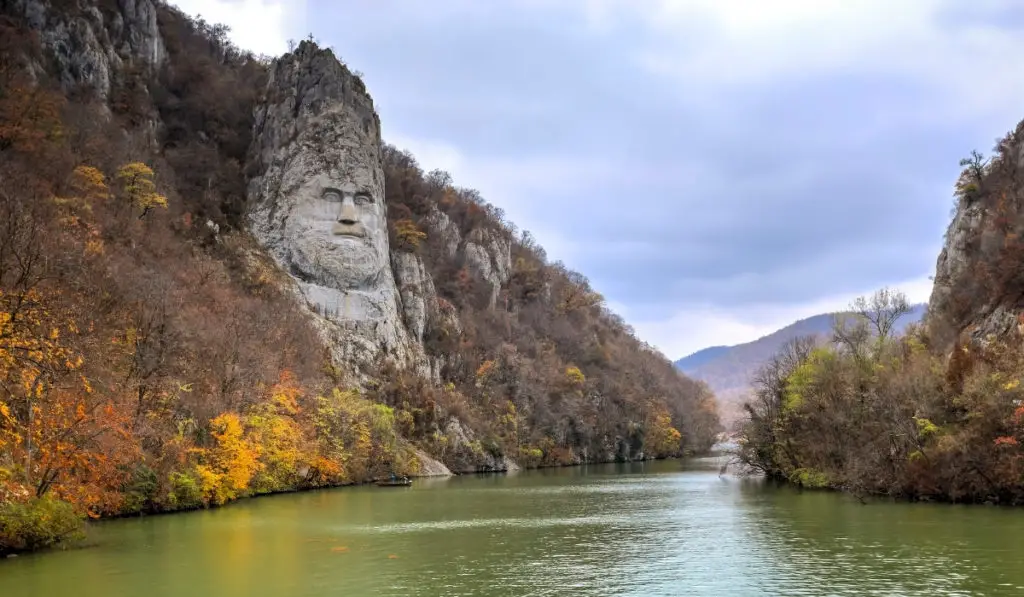
The Statue of King Decebalus is a massive monument located in Romania. The statue depicts the last king of Dacia, Decebalus. It is the tallest statue in Romania and one of the tallest statues in Europe. The statue was built in 2004, and it stands at a height of over 100 feet. The base of the statue is made from granite, and the body is made from bronze. The eyes of the statue are said to be made from emeralds. The statue is located in the city of Orastie, and it is a popular tourist destination.
The Statue of King Decebalus is a must-see for anyone visiting Romania. The statue is an impressive sight, and it is a great way to learn about the history of Romania. The statue is also a popular spot for photos, so be sure to bring your camera!
Visit the Palace of Culture in Iași
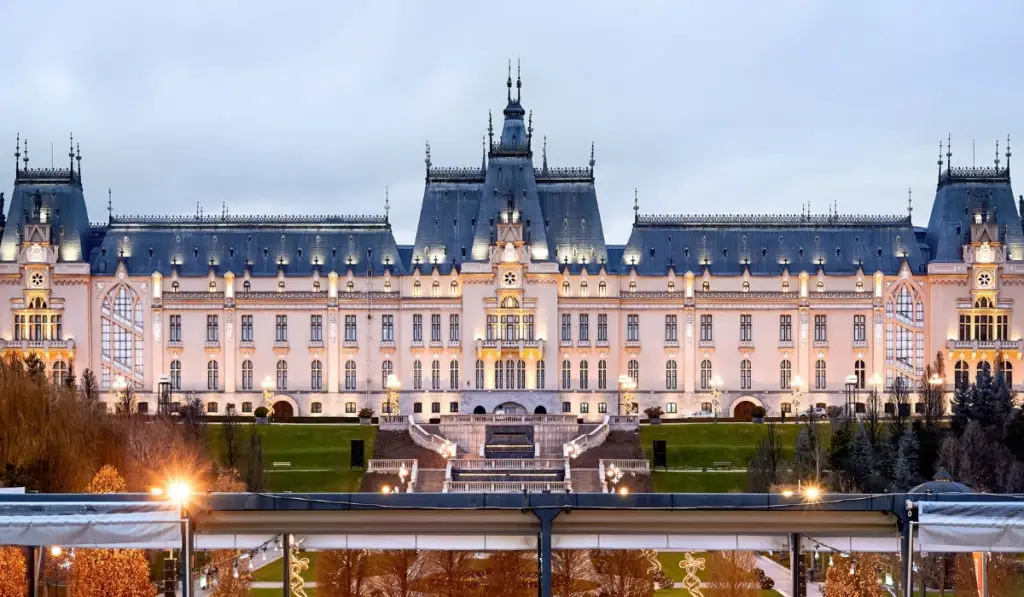
The Palace of Culture in Iași is a large building located in the center of the city. Built in the early 20th century, the Palace has a Neo-Romanian architectural style. The palace houses several museums, a theater, and a library. It is one of the most popular tourist attractions in Iași.
The Palace of Culture is located on Stefan cel Mare Avenue, in the central part of Iași. Petre Antonescu, ion D. Berindey, and Dimitrie Maimarolu designed the Palace of Culture and they commissioned its build between 1906 and 1925. The palace has a total area of 26,000 square meters and is 107 meters long and 60 meters wide.
Sculptures and reliefs decorate the exterior of the Palace of Culture, representing different historical moments from Romania’s past. Two lion statues flank the main entrance, and above the entrance there is a large clock. There are also four statues on the corners of the roof, which represent Romanian rulers from different periods in history.
The interior of the palace is just as impressive as the exterior. The most notable room is the Great Assembly Hall. A large chandelier and two murals by Romanian artist Costin Petrescu are the main focal points. Various events take place in the hall such as concerts, conferences, and exhibitions.
The Palace of Culture in Iași is one of the most important tourist attractions in the city. It is a symbol of Romanian culture and history, and it is definitely worth a visit if you are ever in Iași.
Ski or Snowboard at Poiana Brașov
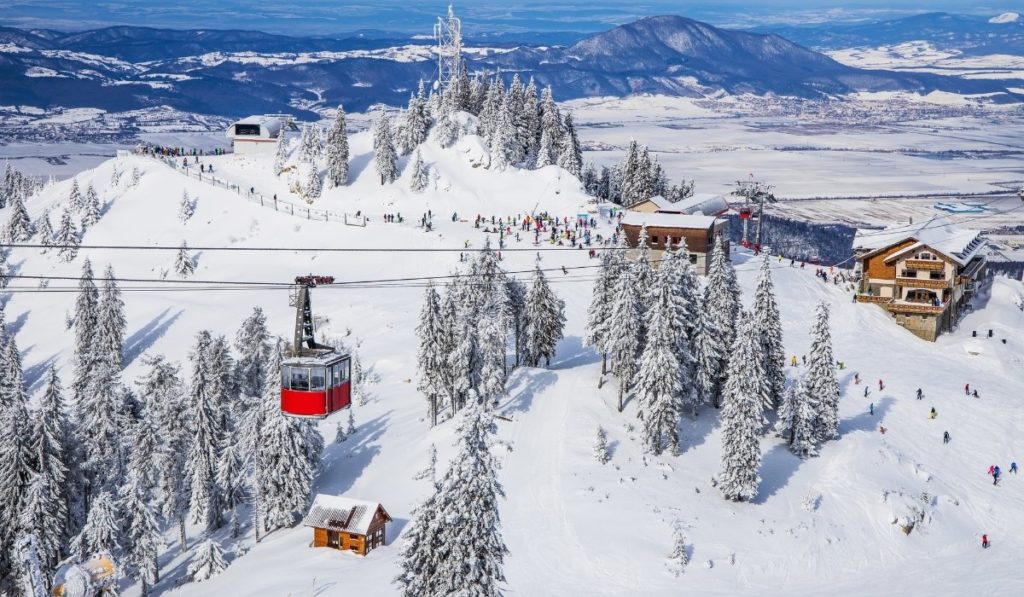
If you’re looking for a great place to ski or snowboard in Romania, look no further than Poiana Brașov. This gorgeous resort town is located in the heart of the Transylvania region, and it’s home to some of the best skiing and snowboarding in the country.
Staff here keep the slopes impeccably-maintained and offer something for everyone, from beginner to expert. When you’re done on the fresh powder, you can enjoy all that Poiana Brașov has to offer, from its charming Old Town to its many restaurants and cafes. So whether you’re a seasoned skier or snowboarder, or if you’re just looking to try something new, Poiana Brașov is the perfect place for you.
Snow sport enthusiasts agree, this is one of the most fun things to do in Romania.
Visit Constanța Casino
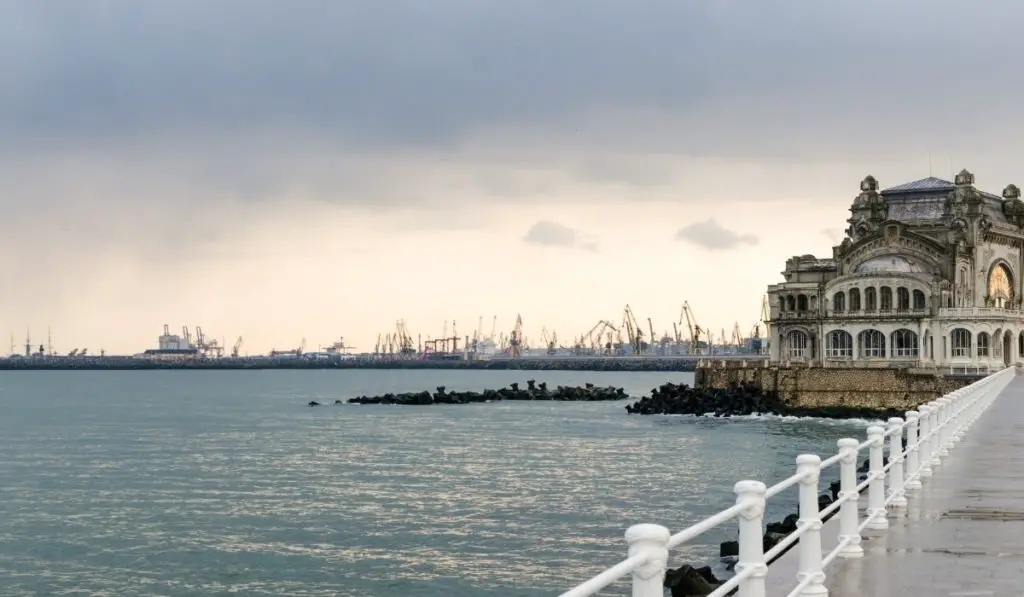
Constanța Casino is a must-visit for anyone in the area. This historic landmark has been a popular tourist destination since it was first built in the early 1900s. The once-thriving casino is located right on the waterfront, so you can enjoy stunning views of the Black Sea while you take photographs of the now-abandoned building.
The building fell into a state of disrepair and slowly became non-functional. It was briefly used as a hospital during WWII, and the building closed entirely in 1990.
When I visited in 2021, it was fully under renovation.
Go to an Underground Amusement Park at Turda Salt Mine
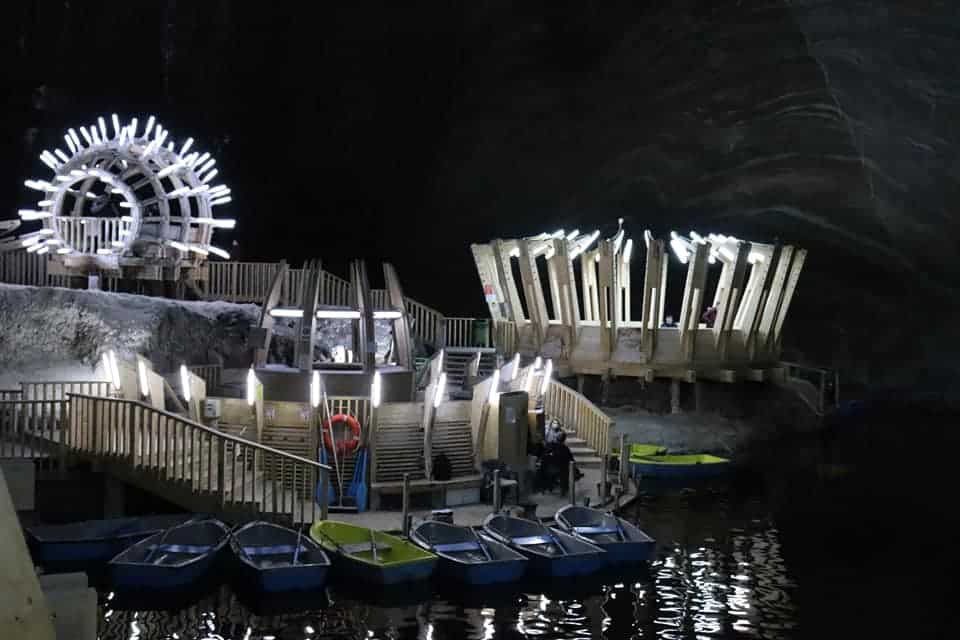
Touted as one of the underground wonders of the world, Turda Salt Mine descends 120 meters below the earth to take you through a salt mine that dates back to the 1200s.
If you’re looking for a truly unique and incredible experience, look no further than the Turda Salt Mine in Romania. This mine is hundreds of years old and has since been turned into a salt museum and spelunking adventure. You are taken through different mines, each labeled with explanations of former uses and the mechanisms used to mine salt there.
Finally, you arrive at the underground amusement park, which admittedly isn’t very large, but it’s underground, what do you expect? You can take a paddle boat on the underground lake or take a ride on the underground ferris wheel. It’s a great place to take the family, though if you’re afraid of heights, consider yourself warned!
You can explore the depths of the mine, learn about its history, and even try your hand at some fun activities like zip-lining. And of course, you can’t leave without trying some of the delicious salt-infused food! Taking a day trip to Turda Salt Mine from Cluj-Napoca is super-easy. This is one of the coolest things to do in Romania, hands down!

